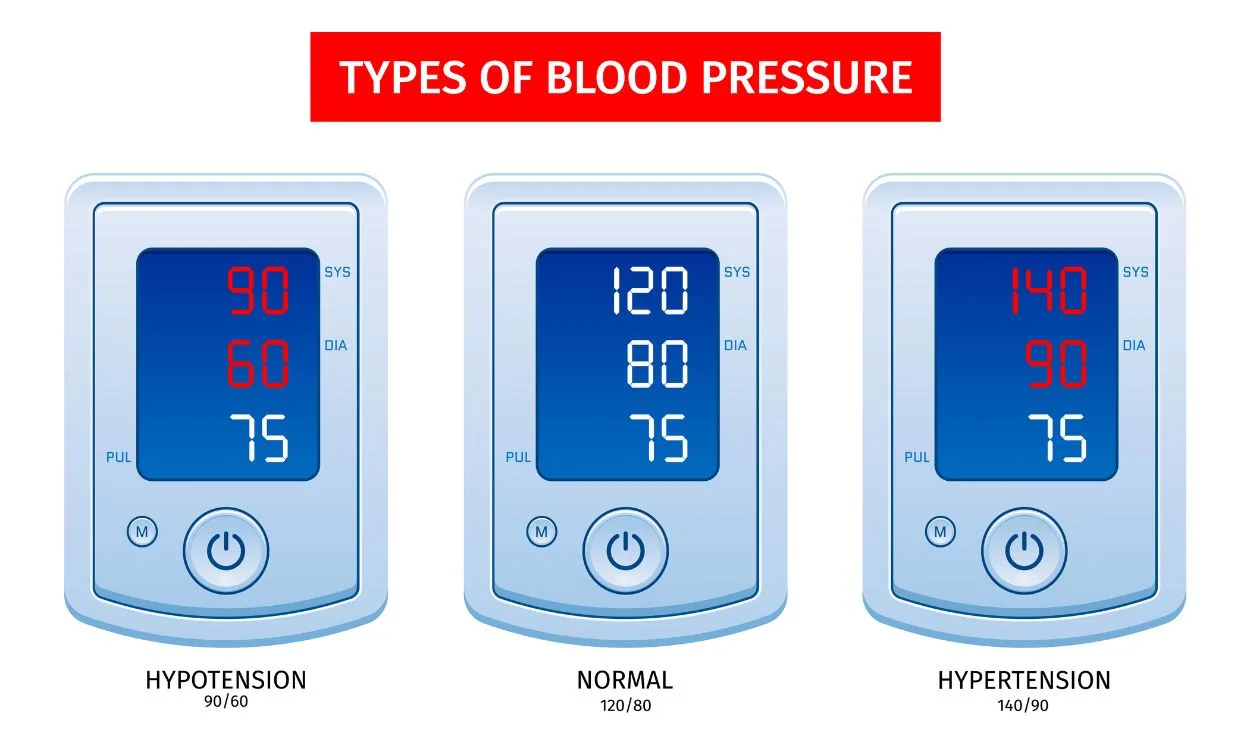How is Blood Pressure Measured and What Do the Numbers Mean?
High blood pressure, also known as hypertension, is a common health condition that affects a significant portion of the population in India. It is important to understand how blood pressure is measured and what the numbers mean in order to monitor and manage this condition effectively. In this article, we will explore the process of blood pressure measurement and provide an explanation of the numbers associated with it.
Introduction to Blood Pressure
Blood pressure refers to the force exerted by the blood against the walls of the arteries as the heart pumps it throughout the body. It is measured in millimeters of mercury (mmHg) and consists of two numbers – systolic pressure and diastolic pressure. The systolic pressure represents the force exerted on the arteries when the heart beats, while the diastolic pressure represents the force between heartbeats when the heart is at rest.
The Process of Blood Pressure Measurement
Blood pressure is typically measured using a device called a sphygmomanometer, which consists of an inflatable cuff and a pressure gauge. Here is a step-by-step guide on how it is done:
- Preparation: The individual should be seated in a calm and comfortable position with their arm supported at heart level. They should avoid any stimulants such as caffeine or tobacco prior to the measurement.
- Placement of the cuff: The cuff is wrapped around the upper arm, just above the elbow. It should be snug but not too tight. The cuff should be positioned at the same level as the heart.
- Inflation: The healthcare professional or individual inflates the cuff by squeezing a rubber bulb attached to it. This temporarily stops the blood flow in the arm.
- Deflation: The cuff is slowly deflated, allowing the blood to flow through the artery. As the pressure reduces, the healthcare professional listens for two distinct sounds using a stethoscope.
- Recording the measurements: The healthcare professional notes the point at which the first sound is heard (systolic pressure) and the point at which the sound disappears (diastolic pressure).
Interpreting Blood Pressure Readings
Blood pressure readings are presented as two numbers, such as 120/80 mmHg. Here is what each number signifies:
- Systolic Pressure: The top number represents the systolic pressure, which is the maximum pressure exerted on the artery walls during a heartbeat. A normal systolic pressure is typically below 120 mmHg.
- Diastolic Pressure: The bottom number represents the diastolic pressure, which is the pressure between heartbeats when the heart is at rest. A normal diastolic pressure is typically below 80 mmHg.
Blood Pressure Categories:
- Normal: Systolic pressure below 120 mmHg and diastolic pressure below 80 mmHg.
- Elevated: Systolic pressure between 120-129 mmHg and diastolic pressure below 80 mmHg.
- Hypertension Stage 1: Systolic pressure between 130-139 mmHg or diastolic pressure between 80-89 mmHg.
- Hypertension Stage 2: Systolic pressure of 140 mmHg or higher or diastolic pressure of 90 mmHg or higher.
- Hypertensive Crisis: Systolic pressure over 180 mmHg and/or diastolic pressure over 120 mmHg. Immediate medical attention is required.
Monitoring and Managing Blood Pressure
Regular monitoring of blood pressure is crucial to identify any potential risks and manage hypertension effectively. If you have high blood pressure, it is important to work with your healthcare provider to develop a personalized treatment plan. This may include lifestyle modifications such as adopting a healthy diet, engaging in regular physical activity, managing stress, and potentially medication.
Introducing Fitpaa – Your Personal Health & Fitness Companion
If you are looking for a comprehensive solution to monitor and manage your blood pressure, the Fitpaa app is here to help. Fitpaa offers a unique combination of AI-driven technology and personalized care to assist you on your health and fitness journey. With Fitpaa, you gain access to a team of fitness coaches, nutritionists, and doctors who will develop a customized Fitpaa Capsule based on your metabolism, health goals, and lifestyle.
The Fitpaa Capsule incorporates various therapies, including medical nutrition therapy, medical exercise therapy, and cognitive behavior therapy, to optimize your metabolic health and help you achieve your fitness goals. The Fitpaa app provides real-time guidance, habit-building techniques, and a virtual workout trainer to support you every step of the way.
Don’t let high blood pressure hold you back from living a healthy and fulfilling life. Download the Fitpaa app today and embark on a journey towards better health and well-being. Your well-being is our mission, and we are committed to helping you achieve your health and fitness goals with guaranteed results. Start your free trial and experience the transformative power of Fitpaa.









